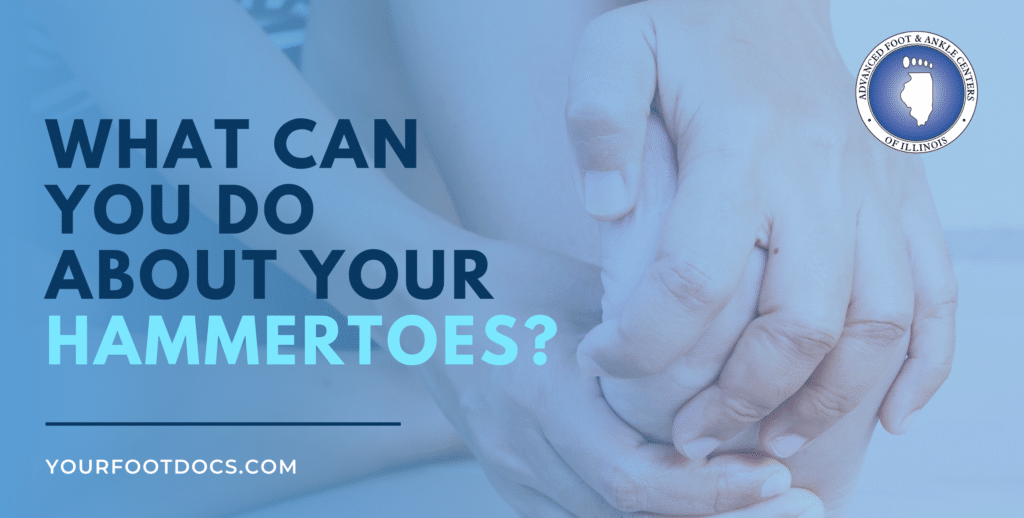What Can You Do About Your Hammertoes?
A hammertoe is not something you wake up one day and suddenly have. It’s a toe deformity that slowly progresses over time, becoming more visible—and likely affecting your daily life in worse ways—year by year.
Many people have lived with one or more hammertoes for so long that they may not think there is much they can do about them. Perhaps they take a small step or two for a bit of comfort, or just leave things as they are and endure the trouble.
The truth is that there is often much that can be done to help a patient with hammertoes find more relief and comfort than they currently have, and in ways that do not have to include surgery. A major part of determining the best course of care is knowing the causes that can exist behind hammertoes and how they affect your life.
What Causes Hammertoes?
Your toes contain several joints, each of which has a supportive network of muscles, ligaments, tendons, and other tissues connected to it.
When these elements are all in balance and alignment, your toe lays and operates normally. If something causes an imbalance, however, it can shift the position of the toe and cause it to rest in an abnormal way.
A hammertoe is an imbalance that causes the middle joint of the toe to become contracted, even at rest. There are similar conditions that cause other joints of the toe to bend, and they go by names like “mallet toe” or “claw toe.”
There are several reasons why you may develop a hammertoe. They can include:
- Having a genetic propensity for an imbalance in your joints (in other words, being born with a higher likelihood of having hammertoes).
- Having suffered previous injuries or trauma to the joints.
- Having arthritis.
- Having an arch abnormality, such as flat feet or high arches.
- Long periods of wearing footwear that crams the toes together or forces extra pressure against the front of the foot.
Hammertoes can clearly cause problems with comfort and mobility in and of themselves, but can also result in secondary problems, too. Corns and calluses can develop as the toe rubs against the inside of a shoe or a neighboring toe.
Hammertoes typically develop in the second, third, or fourth toes, but can conceivably develop in any toe. Which toes have the deformity, as well as additional information received through a thorough evaluation, can provide crucial clues to the most effective course of hammertoe management.
How Can Hammertoes Be Treated Without Surgery?
Treating hammertoes is not always about correcting the deformity itself. In fact, full correction is relatively uncommon.
The primary goals of treating most foot deformities—including hammertoes and even bunions—are to provide relief of a patient’s symptoms as best as possible, help retain their mobility, and slow or stop progression of the deformity.
There are many potential ways to address these goals. Surgery only tends to be considered if more conservative methods do not provide as effective results as we would like, or it is clear that they would not from the start.
No matter how long you’ve lived with a hammertoe, it is always worth evaluating what more could be done to provide further reduction of pain and other symptoms. Recommendations we make to our patients can include:
- Changes in footwear. Toe room is crucial when you have hammertoes—both in width and height. There should be enough clearance along the top to prevent the development of corns along the top of the hammertoe as well as enough wiggle room side-to-side to help prevent the toes from rubbing against each other.
- Pads, cushions, and strips. Using the right barriers and separators can create a much more comfortable situation for hammertoes. These kinds of devices might be recommended for day use, night use, or full time.
- Stretches and exercises. Physical therapy can help your joint maintain mobility and range of motion. It can also help strengthen and condition the tissues surrounding the joint to increase their stability.
- Custom orthotics. For cases where an imbalance in foot structure shifts too much pressure toward the forefoot, custom orthotics can offload these forces and offer a load of relief. This can also help slow the progression of the deformity.
The sooner in the life of a hammertoe that treatment is begun, the more likely it is to have highly beneficial impacts on your comfort and mobility. The “older” a hammertoe gets, the more rigid it tends to become and the more difficult it is to effectively treat through conservative means.
If a hammertoe has become so severe that surgery is the only viable option, we will be sure to discuss potential procedures with you. We wish you to have all the information you need before determining whether you wish to move forward with such a choice.
Get the Complete Hammertoe Help You Deserve
Don’t wait on comprehensive hammertoe treatment. You know that it won’t ever get better on its own!
Advanced Foot & Ankle Centers of Illinois has seven offices in and around Chicago to meet our patients’ foot and ankle needs. Please visit our Offices Page to contact the one closest to you and schedule an appointment.

